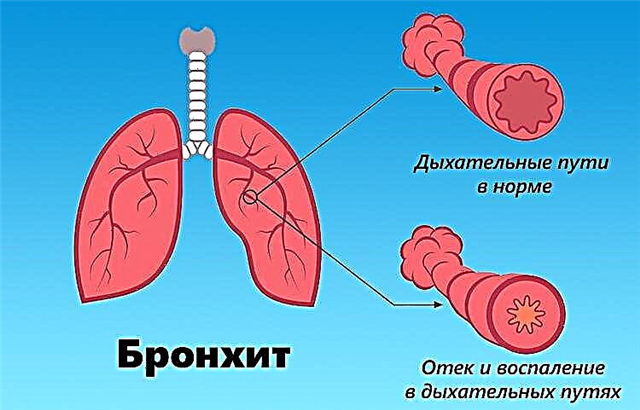Ethmoiditis is a respiratory disease, one of the types of sinusitis, which affects the epithelial cells of the mucous membranes lining the cells of the ethmoid labyrinth. In most cases, it is of an infectious nature. Depending on the localization and method of course, ethmoiditis has several varieties, most of which respond well to treatment.
Location features
 To better understand what ethmoiditis is, let's understand a little about the anatomical features of the structure and location of the ethmoid labyrinth. These paired bone formations are located on both sides of the bridge of the nose and represent a system of several hollow cells of different sizes.
To better understand what ethmoiditis is, let's understand a little about the anatomical features of the structure and location of the ethmoid labyrinth. These paired bone formations are located on both sides of the bridge of the nose and represent a system of several hollow cells of different sizes.
The inner surface of these cells is covered with a mucous lining, the cells of which become inflamed when pathogenic microorganisms enter the sinuses. With its strong edema, the discharge of mucus is difficult, and favorable conditions are created for the development of anaerobic bacteria and the appearance of pus. This process is a developing ethmoiditis.
Due to its central location, the ethmoid labyrinth is adjacent to the orbits of the eyes, frontal and maxillary sinuses. Therefore, in the absence of timely adequate treatment, inflammation spreads rapidly. The reverse process is also possible, when sinusitis or frontal sinusitis becomes the cause of the development of ethmoiditis.
Many people, who often suffer from respiratory diseases, do not treat ethmoiditis, believing that this is an inflammation that will quickly go away on its own as soon as the runny nose stops. This delusion is erroneous and extremely dangerous. When neglected, ethmoiditis gives very serious complications that can even lead to death.
Causes of the disease
The reasons for the development of ethmoiditis are different. Moreover, sometimes it occurs even in infants or newborn babies - usually against the background of sepsis or staphylococcal infection. It is difficult to diagnose it in very young children, and the disease is difficult for them, it often gives complications.
In older children, ethmoiditis is more often a secondary disease and develops against the background of acute or chronic sinusitis (frontal sinusitis). This is due to the fact that the child's skull is still small in size and the sinuses are located very close to each other. Sometimes the disease provokes infectious chronic rhinitis.

Adults usually have chronic or polypous ethmoiditis, which develops against the background of a general weakening of the immune system or under the influence of other negative factors:
- due to too narrow middle nasal passage;
- overlapping exits from the cells of the labyrinth with overgrown adenoids;
- chronic sinusitis of any etymology;
- untreated acute respiratory infections, acute respiratory viral infections and other respiratory diseases;
- infectious or allergic rhinitis;
- injuries or unsuccessful nose surgeries;
- a strong weakening of the body's immune defenses.
In rare cases, catarrhal ethmoiditis occurs due to the individual anatomical features of the structure of the nose or the bones of the ethmoid labyrinth itself. In this case, the disease proceeds sluggishly, without pronounced symptoms and purulent discharge.
Acute form
Acute ethmoiditis is the easiest to diagnose, since it gives a very rapid deterioration in the general condition of the patient and fairly pronounced symptoms, the first and most expressive of which is a severe headache with a clear localization in the middle part of the bridge of the nose. Depending on which of the sinuses is affected, the disease can be right-sided, left-sided, or bilateral. Often the pain radiates to the eye sockets. This happens when the back cells of the labyrinth are affected.
 Other accompanying acute ethmoiditis symptoms are:
Other accompanying acute ethmoiditis symptoms are:
- a sharp increase in body temperature up to 38-39 degrees;
- Difficulty breathing through one or both nostrils
- a decrease in the threshold of smell or its complete absence;
- profuse nasal discharge: serous or mixed with pus;
- swelling of the inner corner of one or both eyelids;
- signs of severe intoxication of the body: nausea, vomiting.
At very high temperatures, fainting, signs of neurotoxicosis, and rapid dehydration are possible.
Secondary acute ethmoiditis develops even faster than primary and always provokes complications. It gives multiple metastatic abscesses in other organs, as well as pronounced eye symptoms: immobility of the eyeball, severe swelling of both eyelids, suppuration of the conjunctiva, etc.
If measures are not taken in time, sepsis or intracranial complications may develop: meningitis, brain or eye abscess, arachnoiditis.
Chronic form
Chronic ethmoiditis develops only after an acute condition if the disease has not been completely cured, the treatment was incorrect, or it is provoked by chronic inflammation of the adjacent sinuses. With an exacerbation of the course of the disease, it gives symptoms characteristic of the acute phase, during the period of remission it can be observed:
- periodic mild pain of typical localization;
- incomprehensible headaches that appear for no reason;
- the formation of lumps of mucus in the nasopharynx (more often in the morning);
- noticeable weakening of the sense of smell;
- persistent or intermittent loss of vision;
- minor mucopurulent nasal discharge.
With chronic ethmoiditis, complications also develop, but the process does not occur so rapidly. But taking into account the fact that these not too pleasant symptoms can bother the patient for months, it is better not to delay the visit to the doctor, but to go for an examination and do everything to get rid of them as soon as possible. Moreover, this is not all the unpleasant surprises that ethmoiditis presents.
General symptoms
 In addition to the direct clinical manifestations of inflammation of the lattice labyrinth mucosa, there are general signs of ethmoiditis, which are almost always present, regardless of the cause of its appearance and the type of disease:
In addition to the direct clinical manifestations of inflammation of the lattice labyrinth mucosa, there are general signs of ethmoiditis, which are almost always present, regardless of the cause of its appearance and the type of disease:
- increased fatigue;
- unreasonable irritability;
- decreased concentration of attention;
- the appearance of memory problems;
- severe loss of working capacity;
- the presence of pessimistic sentiments.
Sleep problems and conditions similar to depressive ones are also possible. That is, even a sluggish ethmoiditis significantly worsens the patient's quality of life and does not allow full work and rest.
Diagnostic methods
Ethmoiditis can be suspected by the primary symptoms and complaints of the patient. But due to the peculiarities of localization, its diagnosis is difficult. It is impossible to inspect the ethmoidal labyrinth through the nasal passage, so the only reliable method is hardware diagnostics. But before prescribing a referral, the doctor will conduct a thorough examination.
 On external examination, swelling in the interorbital region of the bridge of the nose is usually visually noticeable. There may be swelling on the inside of one or both of the eyelids. With rhinoscopy, a strong swelling of the nasal mucosa in the middle of the nasal passage is clearly visible. On palpation of the bridge of the nose, soreness occurs in its middle and at the inner corners of the eyes (on the affected side).
On external examination, swelling in the interorbital region of the bridge of the nose is usually visually noticeable. There may be swelling on the inside of one or both of the eyelids. With rhinoscopy, a strong swelling of the nasal mucosa in the middle of the nasal passage is clearly visible. On palpation of the bridge of the nose, soreness occurs in its middle and at the inner corners of the eyes (on the affected side).
The most effective methods of hardware diagnostics are:
- Endoscopic examination - allows you to get inside the cells of the trellis labyrinth and examine it from the inside, assessing the general condition of the mucous membrane.You can also see if there are polyposis formations in or near the labyrinth and, if necessary, take mucus for laboratory research.
- X-ray is the fastest and cheapest way to assess the situation. On it, inflamed cells are visible as darkened areas. And if you make several different projections, then you can see if the adjacent sinuses - maxillary and frontal - are not affected.
- Computed tomography - is prescribed when there are problems with the differentiation of ethmoiditis with sinusitis, maxillary osteomyelitis or other diseases. It allows you to accurately see all foci of inflammation and assess the degree of damage to the mucous membrane.
Additionally, a laboratory blood test, consultation with a dentist, allergist and infectious disease specialist, bacterial seeding of mucus from the nose may be prescribed. Such studies make it possible to exclude other diseases, as well as to identify pathogens of inflammation, if ethmoiditis is of an infectious nature.
Treatment regimen
Ethmoiditis is not treated by folk methods. Even drug treatment can be complicated due to the difficulty of drug penetration into the labyrinth cells. Therefore, a complex effective therapy is needed, which will simultaneously remove the cause of the inflammatory process and promote the rapid recovery of the mucous membranes.
According to the results of the diagnostic examination, the patient is prescribed various groups of drugs:
- Vasoconstrictor nasal drops - are necessary in order to eliminate puffiness and restore air circulation in the ethmoid labyrinth. This will allow excess mucus to pass away faster and eliminate favorable conditions for the multiplication of anaerobic bacteria that secrete pus. Suitable "Galazolin", "Xylometazoline", "Naftizin", etc.
 Antihistamines - also quickly relieve swelling and reduce the amount of mucus secreted. Best of all, they help against allergic ethmoidal rhinitis, but they are also effective in other forms of the disease: Loratadin, Tavegil, Augmentin, etc.
Antihistamines - also quickly relieve swelling and reduce the amount of mucus secreted. Best of all, they help against allergic ethmoidal rhinitis, but they are also effective in other forms of the disease: Loratadin, Tavegil, Augmentin, etc.- Solutions for rinsing the nose and sinuses are made in pharmacies, but you can rinse with furacillin, "Aquamaris" or saline solution with the addition of antiseptics. In stationary conditions, the YAMIK catheter apparatus is used for washing. This procedure is not very pleasant, but very effective.
- Anti-inflammatory - these are mainly combined drugs that simultaneously lower body temperature, relieve pain, stop inflammatory processes: Nurofen, Ibuprofen, Panadol, etc.
- Multivitamin complexes - accelerate the processes of regeneration of mucous membranes, increase the vitality of the body: "Duovit", "Complivit", "Multitabs", etc.
- Immunostimulants are mainly natural preparations that activate the body's immune system: extracts of ginseng, echinacea, eleutherococcus, "Immunal", etc.
If, according to the results of laboratory tests, the bacterial nature of the disease is revealed, then antibiotics must be included in the course of treatment. A group of drugs, their dosage and duration of use are prescribed and must be monitored by the attending physician.
It is also possible to use antifungal agents to prevent the development of candidiasis while taking antibiotics and a strong decrease in immunity.
After the temperature drops to subfebrile values, and the patient's condition stabilizes, physiotherapy is usually connected to speed up the healing process. It can be UHF, nasal electrophoresis, phonophoresis, laser heating. In rare cases, with advanced disease, surgical intervention becomes necessary.
Prevention methods
Ethmoiditis does not arise for no reason. Therefore, in order to avoid the development of this disease, it is necessary to take measures to eliminate the influence of provocative factors as much as possible. First of all, this is strengthening the immune system and giving up bad habits, especially smoking.
For prevention purposes, it is desirable:
 avoid strong or prolonged hypothermia;
avoid strong or prolonged hypothermia;- cure all respiratory diseases in time;
- monitor the cleanliness of the air in work and living quarters;
- avoid severe overwork or prolonged stress;
- get enough sleep, sleep in a ventilated room;
- monitor the technical condition of the air conditioner;
- strengthen immunity, perform hardening procedures;
- try to prevent exacerbation of existing chronic respiratory diseases.
If strange recurring symptoms appear, it is necessary to consult a doctor and undergo a diagnostic examination, without waiting for the violent manifestation of the disease. It is not difficult to completely cure ethmoiditis at an early stage, and if the disease is severely triggered, you can end up on the operating table.

 Antihistamines - also quickly relieve swelling and reduce the amount of mucus secreted. Best of all, they help against allergic ethmoidal rhinitis, but they are also effective in other forms of the disease: Loratadin, Tavegil, Augmentin, etc.
Antihistamines - also quickly relieve swelling and reduce the amount of mucus secreted. Best of all, they help against allergic ethmoidal rhinitis, but they are also effective in other forms of the disease: Loratadin, Tavegil, Augmentin, etc. avoid strong or prolonged hypothermia;
avoid strong or prolonged hypothermia;

